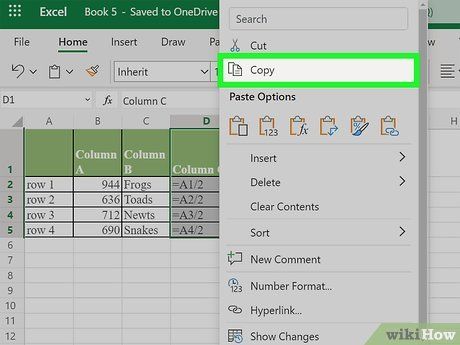Excel Trick: Copy Formulas Across Sheets Easily

Managing data across multiple sheets in Microsoft Excel can be quite a challenge, but mastering a few tricks can significantly improve your workflow efficiency. Today, we’ll dive into a clever technique that allows you to copy formulas across multiple sheets easily. This guide is designed for both novice and intermediate Excel users looking to enhance their data manipulation skills.
Understanding Sheet References in Excel

Before we jump into copying formulas, it’s crucial to understand how Excel handles sheet references. Excel allows you to create formulas that refer to cells or ranges in other worksheets within the same workbook. Here are the basics:
- Relative References: These references change when the formula is copied. For example, if your formula in Sheet1 references A1, and you copy it to Sheet2, it will reference A1 on Sheet2.
- Absolute References: These references stay fixed when the formula is copied. Use the $ sign before the column letter and row number (e.g., $A$1).
- External References: Formulas can reference other workbooks by using the workbook's file name followed by an exclamation mark, the sheet name, and the cell reference (e.g., [WorkbookName]Sheet1!A1).

Copying Formulas Between Sheets

Here's how to effectively copy formulas across different sheets in Excel:
Manual Copy-Paste Method

- Select the Cell: Click on the cell containing the formula you wish to copy.
- Copy the Formula: Right-click and choose 'Copy' or press Ctrl+C.
- Switch Sheets: Click on the tab of the destination sheet.
- Paste Formula: Select the destination cell, right-click, and choose 'Paste' or press Ctrl+V.
💡 Note: When copying formulas, check the references to ensure they are pointing to the correct cells. If you're using relative references, adjust the formula if necessary.
Using the Fill Handle

If you need to copy a formula across adjacent sheets:
- Select the Cell: Click on the cell with the formula.
- Drag the Fill Handle: Look for the small square at the bottom-right corner of the selected cell. Click and drag it across the tabs to copy the formula to adjacent sheets.
💡 Note: Excel might not retain absolute references when using the fill handle, so adjust them if needed.
Advanced: 3D Reference Formulas

Excel's 3D references allow you to create summaries or calculate across multiple sheets. Here’s how:
| Step | Description |
|---|---|
| 1 | Click on a cell in the summary sheet. |
| 2 | Enter the formula to sum or reference data across sheets, for example:
=SUM(Sheet1:Sheet3!A1) will sum A1 from Sheet1 to Sheet3. |
| 3 | Press Enter to complete the formula. |

Copying Complex Formulas Across Sheets

When your formulas contain multiple references or are particularly complex:
Using Excel's 'Name Manager'

- Define Named Ranges: Go to Formulas > Define Name. Give a name to the cell or range you want to reference in your formulas across sheets.
- Use Named Ranges in Formulas: Instead of using direct cell references, use the named ranges (e.g., =TotalSales instead of =Sheet1!B2).
💡 Note: Named ranges can significantly reduce errors when copying formulas across sheets by providing a consistent reference point.
Utilizing External Links

If you're working with external workbooks, here's what to do:
- Open the Destination Workbook: Have both source and destination workbooks open.
- Copy the Formula: Copy the formula as usual.
- Paste Special: Right-click the destination cell, choose 'Paste Special', and select 'Paste Link'. This creates a dynamic link between the two workbooks.

The process of copying formulas across sheets in Excel can save you significant time and effort when working with complex spreadsheets. By understanding how Excel handles sheet references and mastering these copying techniques, you can streamline your data management tasks. These methods are not only applicable to simple data entry but also to intricate financial models or analytical worksheets.
Frequently Asked Questions

Why don’t my formulas copy correctly across sheets?

+
This could be due to relative references changing when copied or because of external links to closed workbooks. Ensure to adjust references or use absolute references where needed.
Can I use Excel’s 3D references for complex calculations?

+
Yes, 3D references are versatile for tasks like summarizing data or performing calculations across multiple sheets, making them useful for complex analyses.
How do I avoid errors when copying formulas?

+
Use named ranges for consistency, review references after copying, and understand the context of your data to minimize errors.